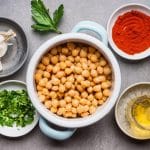
The benefits and limitations of the glycaemic index
There are a number of popular diets based on the glycaemic index (GI), as well as using the GI of foods as a means to identify carbohydrate containing foods which may influence blood sugar levels. This fact file explores both the GI and glycaemic load (GL), why it can be useful and the limitations that come with doing so.
What is the glycaemic index (GI)?
The GI studies the effect different foods have on blood sugar levels and is based on a numbered ranking system. White bread or glucose is used as a standard reference of 100 and other foods are ranked against this according to how quickly or slowly the effect of specific foods have on blood sugar levels once consumed. The lower the ranking, the more slow releasing the food.
However, the GI ranking of the food only tells you the speed at which is changes blood glucose levels when consumed on its own.
The 3 rankings of GI values are listed below with examples:
- Low GI: 1-55 – Lentils, apples, porridge
- Medium GI: 56-69 – Couscous, eggs, apricots
- High GI: 70+ – Sweetened fruit juice, waffles, many processed meats
Why should I pay attention to the GI of food?
The purpose of paying attention to the GI of food is so control blood sugar levels; something that is especially useful for those with diabetes.
Glycaemic load (GL)
Glycaemic load values are as follows:
- Low: 1-10
- Medium: 11-19
- High: 20+
The GL addresses one of the limitations of the GI. The GI incorporates a standard test level weight of food, rather than a typical portion, which is what the GL works with. Using the GL can have the potential to be more useful as it reflects the typical quantity of food you are likely to eat. Example:
| Food choice | Couscous | Watermelon |
| Glycaemic index (GI) | Medium GI | High GI |
| Glycaemic load (GL) | Low GL | Low GL |
GI Limitations
The reality is that food tends to be eaten in combination. Combining foods will alter the GI value as each food within your meal will have a different GI level. Cooking or changing the structure of food also has an impact on the GI value.
Focusing solely on the GI content may not allow you to make the healthiest food choices as not all foods that have a high GI are unhealthy and not all foods that have a low GI are unhealthy. For example, fat content can reduce the GI value, making choices such as crisps and ice cream look good on paper, but not be the healthiest choice.
Summary
The glycaemic index of food is just one aspect to take into consideration when making healthy choices. Other factors such as exercise, portion size and alcohol intake whilst focusing on the consumption of a balanced diet need to be taken into consideration for optimal health and wellbeing.
How can I reduce my risk of diabetes?


